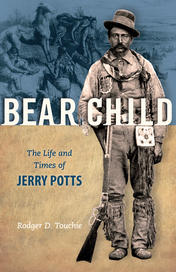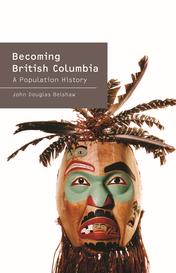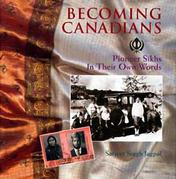Canada



Excerpt from Preface by Sarjeet Singh Jagpal
The experience of talking to the elders was a powerful one for me, too powerful to be translated directly into words. The rhythm of the individual voices, the pauses, the laughter, the waves of emotion; the sounds and sights and "feel" of their homes as they sat surrounded by a lifetime of precious belongings and momentos, entrusting their memories to me - no medium could capture the intensity of this experience. At the same time, working with these men and women made me even more profoundly aware of how important it is to record their stories, publish their photographs and documents, and make their memories available to all Canadians. Their experiences are the very essence of history and culture.
Excerpt from Chapter 1: Setting the Scene
Probably the first Sikhs to see British Columbia were the Punjabi soldiers from the Hong Kong regiments travelling through Canada after celebrating Queen Victoria's Diamond Jubilee in London, England in 1887. They were impressed with the majestic landscape, the rich vegetation, and the favorable climate of BC: all quite similar to their homeland, the Punjab province in India. Word traveled fast about the opportunities in this new land and adventurous Sikhs soon started making travel plans.
The Sikhs' arrival in Canada began with the first wave of immigration in 1904-1908. At this time about 5,000 East Indians, virtually all of them male Sikhs from the province of Punjab, came to British Columbia to do laboring jobs on railway construction, in the lumber mills and in forestry. Even though they were unskilled and uneducated, they were favored by employers because they were hardworking and reliable, and because the employers could pay the Sikhs less than White men for the same work.
These pioneer Sikhs did not intend to stay here long since they did not receive a warm welcome from their hosts. Their intention was to make money and return to India. They came to a cold and hostile environment, both literally and figuratively. Besides, language problems, poor education, lack of proper housing and health care, and culture shock, they faced racial discrimination and segregation. There were some anti-Asian feelings at this time: the Chinese head tax had risen in 1903 to $500 per person and all Asians were portrayed in the media as dirty, diseased, uncivilized beings who were incapable of adapting to Canadian ways. They were a blight on the Canadian landscape. Racism and injustice were a fact of life for all Asians in Canada, but for these men, being apart from their families was especially painful. Hugh Johnston writes: "Constantly in the company of their own countrymen - at work and in their lodging or bunkhouses - Sikhs were isolated by their pattern of life as well as by language, culture and the attitude of the host population. Family life, with children going to school and contacts with neighbors, would have reduced this isolation, but this was an adult male population since only nine women immigrated between 1904 and 1920."
As British subjects, Sikhs had the right to vote in all elections. This was viewed as posing a threat to the existing government, since it meant that a significant block of votes - there were 5,000 Sikhs - might go to another political party more sensitive to human rights, immigration and fair play. So in 1907, the government of British Columbia passed a bill to disenfranchise all natives of India not born of Anglo-Saxon parents. Sikhs were denied the municipal, the provincial and then the federal right to vote, even though they were British subjects. The implications of these actions were far-reaching. Until 1947, South Asians would remain excluded from the political process in British Columbia and from becoming Canadian Citizens. They could not vote for or become school trustees or trustees of improvement districts; neither could they be elected for provincial public office or serve on juries. Although exclusion from the voter's list did not legally restrict Sikhs from public service, this became the rule. Public works contracts specified that they not be employed. The same restriction applied to the sale of Crown timber, and many professions such as law and pharmacy were informally closed to them.
The loss of the vote and its implications probably did not bother the Sikhs, since most were uneducated and unable to take full advantage of such rights and privileges. But the next move was devastating. Fed by the strong anti-Asian feelings among trade unionists, politicians and the media, the Canadian government adopted a new policy and issued an order-in-council on January 8, 1908 designed to stop all immigration from India. All immigrants seeking entry had to come to Canada by continuous journey and with through-tickets from the country of their birth or nationality or citizenship. At this time, there was no direct passage from India to Canada. An immigrant from India also had to have this possession $200, while immigrants from Europe needed only $25. They were obliged to undergo medical and sanitary examination upon arrival in Canada, and their landing in Canada was subject to favorable labor conditions prevailing at the time. The harsh effect of this legislation was dramatic: from 1908 to 1920 only 118 immigrants from India entered Canada.
In 1908, there was even an effort to deport all those who remained in Canada to British Honduras in order to effectively rid the country of " hindoos " in order to " keep Canada white. " H. H. Stevens, the leader of the Asiatic Exclusion League and a city of Vancouver alderman, said in 1907, " We contend that the destiny of Canada is best left in the hands of the Anglo-Saxon race, and are 'unalterably and irrevocably' opposed to any move which threatens in the slightest degree this position.... As far as Canada is concerned, it shall remain white, and our doors shall be closed to Hindoos as well as to other Orientals. " The federal government paid a delegation to go to British Honduras and investigate employment opportunities, economic conditions and possibilities of settlement for all of British Columbia's Sikhs. This delegation consisted of J. B. Harkin of the Interior Ministry of the federal government, William Hopkinson, a Vancouver immigration official and interpreter, and two local Sikhs, Nagar Singh and Sham Singh. When the Sikhs returned and reported back to the community about the unsuitability and poor living and economic conditions of British Honduras, the local Sikhs unanimously rejected the proposal and steadfastly declared their intention to stay in Canada. This plan was probably far too extreme ever to have succeeded, but it does give an indication of the intensity of the anti-Asian sentiments of that time and the stance of all levels of government on the issue.
Another government scheme to get rid of the Sikhs in Canada was subtler. Whenever a Sikh went back to India to get married or visit his family, he faced difficulties on his return because he could not prove previous residence in Canada. The Canadian immigration department did not provide East Indians with the proper documentation when they left Canada, although they systematically registered outgoing Chinese. The policy was deliberately designed to make return more difficult.
The Sikhs had come here to work and to better themselves, not fight a continuing battle with the Canadian authorities, but fight they must because it was not in the Sikhs' nature to let injustice go unchallenged. Still, it was an unfamiliar battle. They were used to fighting face to face; here their adversary assumed many forms and disguises.
This called for a different strategy and a change in tactics. In 1909, the Sikhs in British Columbia called in an educated Sikh, Professor Teja Singh, to lead them in their fight for rights. He had been educated in India as well as in the United States, where he had earned a Master of Arts degree at Harvard. He possessed the knowledge, skills and experience to help the Sikhs in British Columbia, having already established temples (gurdwaras) and Sikh communities in many North American cities.
After meeting with Sikh leaders in Vancouver, Professor Teja Singh saw as his first mission the necessity to change the negative image of the Sikhs in the eyes of the Canadian public. The idea of Sikhs as dirty, uncivilized, low-status rabble not worthy of being Canadians had to be eradicated. Sikhs must be seen as totally committed to living in Canada and as model citizens. Professor Singh began by establishing the Guru Nanak Mining and Trust Company to organize and secure the economic welfare of the Sikh community. The company's headquarters were at the Vancouver Sikh Temple at 1866 West 2nd Avenue. Its intentions were:
To establish the Sikhs, Hindus and Mohammedan in British Columbia, Canada and the United States on a firm footing; and gain a status for them as a self-respecting and independent people.
To bring the wives and children of as many immigrants as possible and settle them as independent farmers. This with a view to sweep aside one of the most virulent Canadian objections and also to render the lives of immigrants happier and to broaden the horizon and sympathies of the women and children.
To get as many shareholders of the company as possible to donate all or at least half of their profits for educational and missionary purposes.
According to the company charter of September 1909 its aims were:
To organize Guru Nanak Hostel for East Indian Students.
To buy land for farming to settle unemployed workers.
To invest in mining to get employment for workers.
To organize their own Trust Company to look after the banking needs of the workers.
To open their own shopping market to import needed goods from India.
To organize a Canadian-Indian Supply and Trust company.
To organize a company of Canadian homebuilders.







